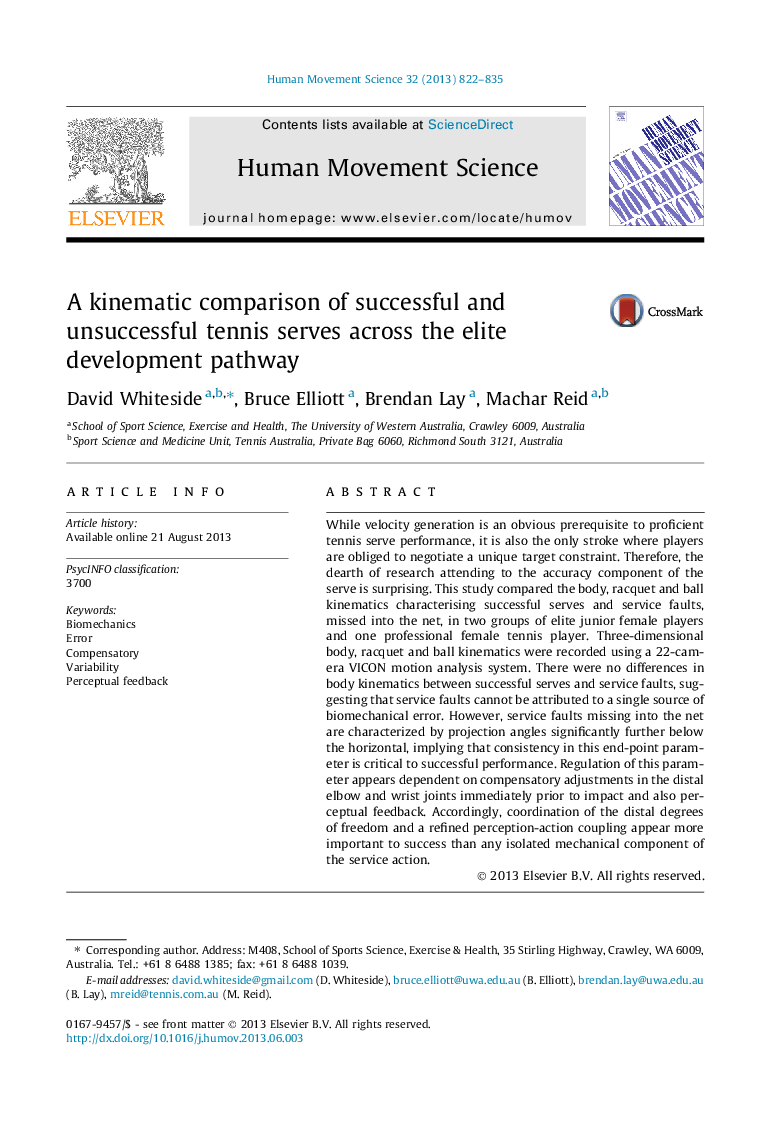| Article ID | Journal | Published Year | Pages | File Type |
|---|---|---|---|---|
| 10459207 | Human Movement Science | 2013 | 14 Pages |
Abstract
While velocity generation is an obvious prerequisite to proficient tennis serve performance, it is also the only stroke where players are obliged to negotiate a unique target constraint. Therefore, the dearth of research attending to the accuracy component of the serve is surprising. This study compared the body, racquet and ball kinematics characterising successful serves and service faults, missed into the net, in two groups of elite junior female players and one professional female tennis player. Three-dimensional body, racquet and ball kinematics were recorded using a 22-camera VICON motion analysis system. There were no differences in body kinematics between successful serves and service faults, suggesting that service faults cannot be attributed to a single source of biomechanical error. However, service faults missing into the net are characterized by projection angles significantly further below the horizontal, implying that consistency in this end-point parameter is critical to successful performance. Regulation of this parameter appears dependent on compensatory adjustments in the distal elbow and wrist joints immediately prior to impact and also perceptual feedback. Accordingly, coordination of the distal degrees of freedom and a refined perception-action coupling appear more important to success than any isolated mechanical component of the service action.
Related Topics
Life Sciences
Neuroscience
Cognitive Neuroscience
Authors
David Whiteside, Bruce Elliott, Brendan Lay, Machar Reid,
